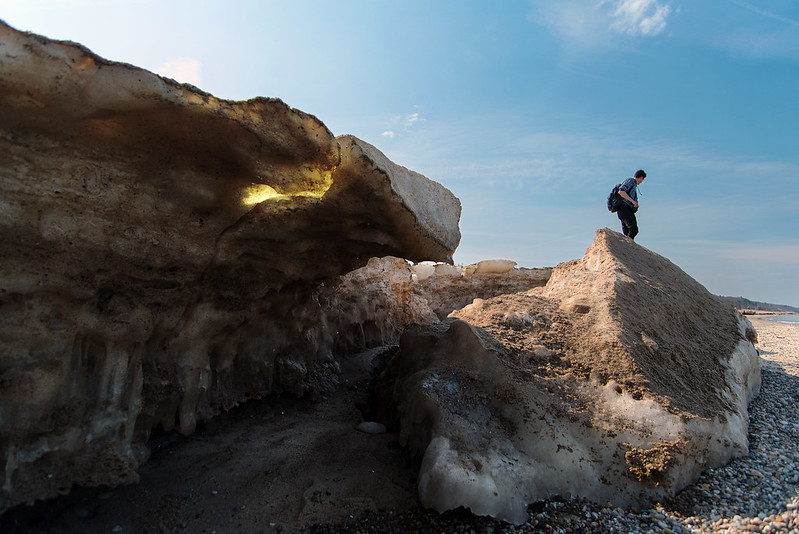
It never lasts for long, but this year, shelf ice is disappearing early with the recent warm weather. Temperatures in the low 70s this past Saturday, melted almost every pile of snow and ice around, with the exception of the huge chunks of shelf ice created by the crashing waves of Lake Michigan a few months back. They're so large it's taking a bit longer for them to disappear.
These remnants are relatively safe to explore now because they are completely on solid ground, some ten feet from the lake. The only danger would be if a chunk of ice broke off and fell to the ground, anyone underneath would be crushed. Without the waves undercutting the ice, the chunks should stay intact and simply melt.
Summer-like temperatures brought everyone outdoors this weekend, and many flocked to the Indiana Dunes National Park, perhaps to enjoy one last time visiting before the admission fees begin at the end of March. $45 for an annual pass, $15 for a weekly pass. I hope the fees go to creating more trails from the old roads and paths that wind behind the dunes.
It's easy to see how someone who is unfamiliar with the area could mistaken the ice for solid ground. Sand and rocks are incorporated in the ice, so rocks are the size of softballs, so it would seem you're on solid ground when in actuality, you're on ice. The power of the waves picks up bricks and rocks and tosses them onto the ice where they become mixed with snow and ice.
This is indeed the only time it's relatively safe to walk on the ice along the Lake Michigan shore. The ice is not floating on the water, so there is no way to fall through into cold water. It's very interesting to see the ice from the "other side", but a lot of fracturing and erosion has happened, so it's not quite as it was when the waves were forming it. Still, it's a different vantage point than the middle of the winter.




No comments:
Post a Comment